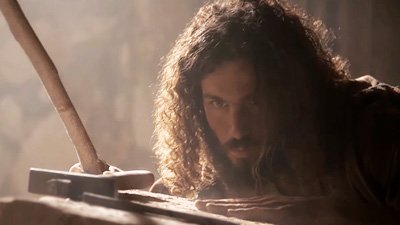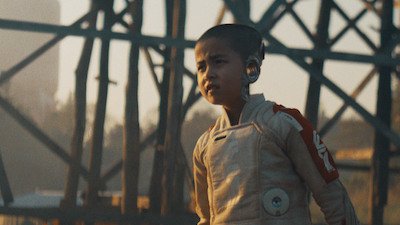
Movie Review: Patterns of Evidence—Journey to Mount Sinai Part II
Follow a fascinating journey to confirm biblical history.
The second installment of the Journey to Mount Sinai series has finally arrived, premiering in theaters nationwide on May 15 and 17. Advance tickets are available at Fathom Events. Part 1 examined the sites of the traditional Mount Sinai, Jebet Sanlyah, and Hashem el-Tarif. Part 2 features three additional mountains; investigative filmmaker Timothy Mahoney includes you in his quest to determine the best candidate for the biblical Mount Sinai. The audience can participate using a scorecard listing characteristics the Bible says must be part of the criteria for locating Mount Sinai. We were given an advance copy to review to evaluate the film and better inform moviegoers what to expect. Don’t worry; there won’t be any spoilers.
The underlying commitment to biblical authority in general and, in particular, the historicity of the Exodus makes this movie well worth attending.
As with previous entries in the series, the cinematography is stunning. The beautiful scenery, sweeping views of the various sites, and up-close details of interesting artifacts and pieces of evidence are a visual treat. Additionally, the film features interviews with archaeologists, biblical historians, adventurers, and theologians to give important context to the various archaeological sites. The underlying commitment to biblical authority in general and, in particular, the historicity of the Exodus makes this movie well worth attending. I’ll list the three mountains under scrutiny in this film and discuss what the researchers had to say but won’t divulge any preferences. You can find that out when you see the movie.
Har Karkom (North Sinai Peninsula)
Har Karkom (also called Jabal Ideid) is a mountain in the southwest Negev desert in Israel, close to the Egyptian Border. The prominent plateau is around 2,600 feet (800 meters) above sea level. The numerous rock engravings, altars, and pillars make this mountain an interesting candidate for Mount Sinai (Exodus 24:4). As archaeologist Dr. Emmanuel Anati put it, “Sanctuaries and altars located on the mountain and at its foot, as well as numerous remains of campsites, tell the hitherto unknown story of a sacred mountain in the heart of the desert of Exodus, which seems to reflect with surprising precision the events and conditions described to us.”1 You’ll see researchers as they explore the site and hear from several researchers who have visited the site, and you can mark down your agreement or disagreement with the biblical criteria for Har Karkom as Mount Sinai on your scorecard.
Hala-‘l Bedr (Arabian Peninsula)
This site, along with the next stop, are the only two in the Arabian Peninsula, with all others being in the Sinai Peninsula or the Negev of Israel. This mountain is called “Musa Mountain” in local parlance, signifying its association with Moses. Hala-‘l Bedr (also called Halā-‘l Badr) is located in the area most biblical archaeologists and historians believe was part of ancient Midian. This volcanic mountain is on a high plateau around 5,000 feet (1524 m) above sea level, and the cone of Mount Bedr is around 500 feet above that. Some of the interesting finds in the area include Midianite pottery shards and several wells (meaning water was available). There is also satellite imagery of ancient streams (now mostly dry wadis). Bulls are painted on the cliffs, surrounding stone surfaces, and a large plain at the base of the mountain (Exodus 19:2), and there is a lava cave about 3,000 feet up the mountain (1 Kings 19:8–9). Once again, you can score this mountain’s credentials on your scorecard and see how it stacks up to the biblical Mount Sinai.
Jabal al-Lawz (Arabian Peninsula)
This site has been one of fascination for Mount Sinai hunters for many years. Jabal al-Lawz is the highest mountain in this region, rising 8,460 feet (2,580 m) above sea level. Several American adventurers have been arrested for trying to get to this mountain in the 1980s. Saudis have put fences around the site and have only recently allowed a few tourists and foreign nationals, such as a South Korean who was the physician to the crown prince of Saudi Arabia in the 1990s. He was given a guided tour of the surrounding area, including a tomb complex called Jethro’s cave, which the locals ascribe to the Midianites who once lived there (Exodus 18:1–5).
There is a large plain at the base of the mountain, which is well watered, including running streams (Exodus 19:10, 14) and a large ledge halfway up the mountain (Exodus 24:9–15). There is also a large cave two-thirds of the way up the mountain. There are carvings and paintings of bulls at the site and what appears to be an animal pen with chutes that were likely designed for sacrificial purposes. There are several marble stone markers, which may have once been pillars. Not far away is an oasis with springs and several palm trees, signifying that the place can sustain flocks and herds of animals (Exodus 12:38, 34:3). There is also a huge boulder nearby which is split right down the middle (Exodus 17:6; Psalms 78:15; Isaiah 48:21). As with the other sites, you get to analyze the data and see how this mountain aligns with the criteria for the biblical Mount Sinai.
Mountains of Fun, Entertainment, Intrigue, and Education
As mentioned at the beginning, there are no spoilers in this article. We at AiG want you to experience the dramatic scenery and rugged mountain peaks and, most importantly, gain a greater understanding of the Bible as you journey with Tim Mahoney on his quest in this film. You’ll get to see some of the latest archaeological findings and some findings that no one outside the areas has ever seen. You’ll also get to hear the scholars debate on the merits of a particular mountain but gain insights into the local people’s thoughts about the region the mountain is in.
This is a family-friendly film with only one real and one reenacted scene, which might be frightening for small children (armed guardsmen). Thankfully, nobody was hurt in either encounter, although some of the men were arrested and detained (in the 1980s and 1990s).
We highly recommend this movie and think you will come out of it with a greater appreciation of the scope of the Exodus, the rich detail recorded in Scripture, and the sites which correspond to some of the camps along the way to Sinai.
One valuable aspect of this film, and the series as a whole, is the presentation of different candidates with the arguments for and against each one, featuring the Bible as the authority. The viewer is invited to engage with the evidence, examining it in light of Scripture, to arrive at a conclusion of his or her own, noting that some biblical scholars who were interviewed don’t have a high view of the historicity and authority of the Bible. This means some discernment is needed, and youth may need help navigating these parts of the film, but we believe the movie clarifies which scholars are not adhering to the text of Scripture on certain details.
We highly recommend this movie and think you will come out of it with a greater appreciation of the scope of the Exodus, the rich detail recorded in Scripture, and the sites which correspond to some of the camps along the way to Sinai. Be sure to get your tickets to the May 15 or 17 showings (and we’d suggest getting them well in advance). You won’t want to miss this movie!
Footnotes
- Emmanuel Anati, “The Riddle of Mount Sinai Archaeological Discoveries at Har Karkom,” accessed April 28, 2023, https://www.harkarkom.com/.
Recommended Resources

Answers in Genesis is an apologetics ministry, dedicated to helping Christians defend their faith and proclaim the good news of Jesus Christ.
- Customer Service 800.778.3390
- © 2024 Answers in Genesis







